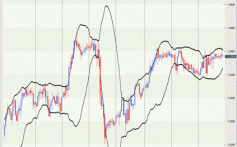All but one major pass Fed s stress test
Post on: 16 Март, 2015 No Comment
Analysis & Opinion
n>(Reuters) — U.S. banks have enough capital to withstand a severe economic downturn, the Federal Reserve said on Thursday, with all but one major bank passing the annual health check of the financial sector.
A stronger economy and banks’ efforts to boost their capital since the 2007-2009 U.S. financial crisis helped all 18 participating lenders except Ally Financial meet the minimum hurdle of a 5 percent capital buffer in the Fed’s stress test.
The tests give regulators a view into how the banking sector would respond to a severe recession. The firms in the test represent more than 70 percent of total bank holding company assets in the United States, a senior Fed official said.
The nation’s largest bank holding companies. are collectively in a much stronger capital position than before the financial crisis, the Fed said in a statement.
Of the four largest U.S. banks, Bank of America ( BAC.N ), Wells Fargo ( WFC.N ) and Citigroup ( C.N ) saw improvements in their minimum Tier 1 common capital ratios, compared to last year’s similar test, while JPMorgan Chase ( JPM.N ) was steady at 6.3 percent.
Citigroup had the highest ratio of the top four at 8.3 percent.
Two Wall Street banks, Morgan Stanley ( MS.N ) at 5.7 percent and Goldman Sachs ( GS.N ) at 5.8 percent, showed the two lowest outcomes above the 5 percent threshold.
Stress testing has become a central part of U.S. regulators’ efforts to shore up the financial sector after the crisis. The 2010 Dodd-Frank financial oversight law called for the tests to ensure banks have big enough capital cushions to survive a severe recession or other economic jolt.
Regulators also will use the tests to determine whether banks can start returning money to shareholders in the form of dividends or share buybacks. The Fed will not announce those results until next week.
Unlike last year, the first batch of results does not look at the impact of any such payouts. The Fed’s 2012 rejection of a dividend boost by Citigroup ( C.N ) sent its shares tumbling.
To avoid a similar debacle, the Fed is giving banks 48 hours to tweak any capital plans they may have, before releasing decisions on those plans next Thursday.
Citigroup said on Thursday it was not seeking an increase in its current quarterly dividend of one cent per share. It did ask to conduct a $1.2 billion common stock buyback program through the first quarter of 2014.
Under the Fed’s toughest stress scenario, which yielded the results disclosed on Thursday, unemployment would spike to 12.1 percent, equity prices would fall more than 50 percent, housing prices would dip more than 20 percent, and the largest trading firms would experience a sharp market shock.
The results showed that the 18 banks’ aggregate so-called tier 1 common capital gauge would hit a low of 7.4 percent under the hypothetical stress scenario. That was much better than an actual 5.6 percent at the end of 2008, the Fed said.
The industry has clearly recovered, said Nancy Bush, a veteran bank analyst and contributing editor with SNL Financial. But I don’t think anybody is going to do anything heroic in terms of rewarding shareholders over the next couple of years, and I think we need to get ready for that reality.
At 1.5 percent, Ally Financial was the only bank to miss the 5 percent target. The U.S. government owns a majority stake in Ally, the former General Motors ( GM.N ) lending arm, after a series of government bailouts.
The firm is working through the bankruptcy of its Residential Capital unit, and is largely exiting the mortgage business to focus on auto lending. It is also selling its international operations.
Firms that come in below the 5 percent minimum must work with the Fed on a plan to bring their capital back up to the standard, senior Fed officials said.
Aggregate losses at the 18 companies were projected at $462 billion during the nine quarters under the scenario, down from $534 billion in losses at 19 companies last year. MetLife, which was included in last year’s test, has since shed its bank holding company and did not participate this year.
A senior Fed official attributed the loss decline to continued writedowns of bad assets, improved underwriting for new loans and improved financial health of borrowers.
(Reporting by Emily Stephenson in Washington and Rick Rothacker in Charlotte, N.C.; Additional reporting by Douwe Miedema and David Henry; Editing by Karey Van Hall and Tim Dobbyn )














